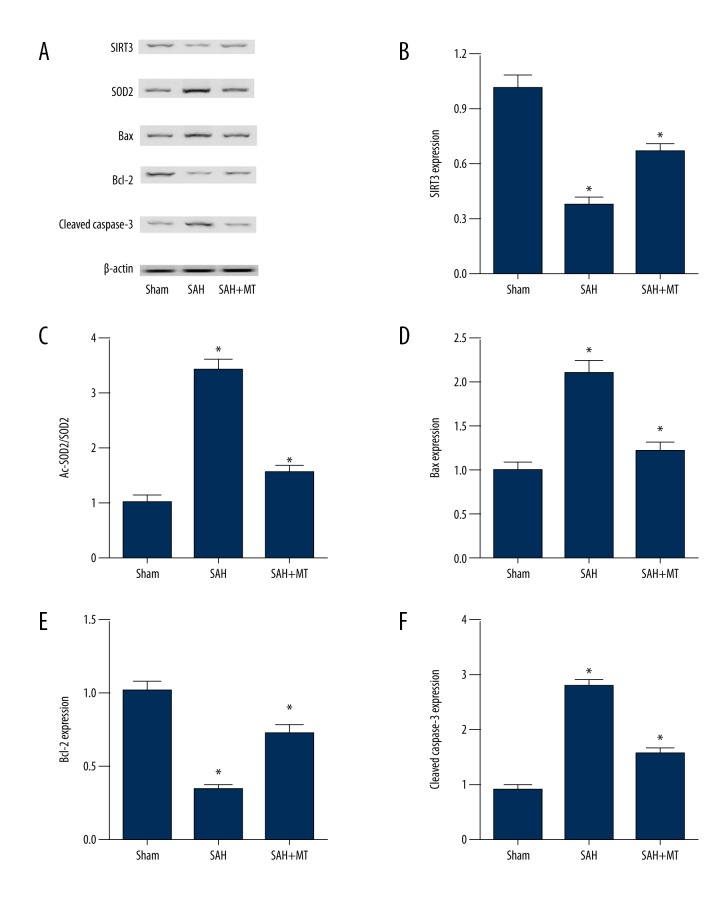Figure 3.
Melatonin was associated with early brain injury (EBI) after subarachnoid hemorrhage (SAH) by affecting redox and apoptotic genes. Three mouse groups were studied: the subarachnoid hemorrhage (SAH) group; the sham group; and the SAH + melatonin-treated group (intraperitoneal dose, 150 mg/kg). (A) Melatonin treatment increased Bcl-2 and Sirt3 protein levels, and decreased SOD2, Bax, and cleaved caspase-3 levels following SAH. (B) Sirt3 protein levels in the SAH group and SAH + melatonin-treatment group were much lower than in the sham group. (C) SOD2 levels in the SAH + melatonin-treatment group were much greater than in the sham group, and the SAH group. (D) Bax levels in the SAH group were much greater than in the SAH + melatonin-treatment group, and both of them were much greater than in the sham group. (E) Bcl-2 levels in the SAH and SAH + melatonin-treated groups were significantly lower than in the sham group. (F) Cleaved caspase-3 levels in the SAH + melatonin-treatment group were significantly greater than in the sham group, and were significantly greater than in the SAH group.

